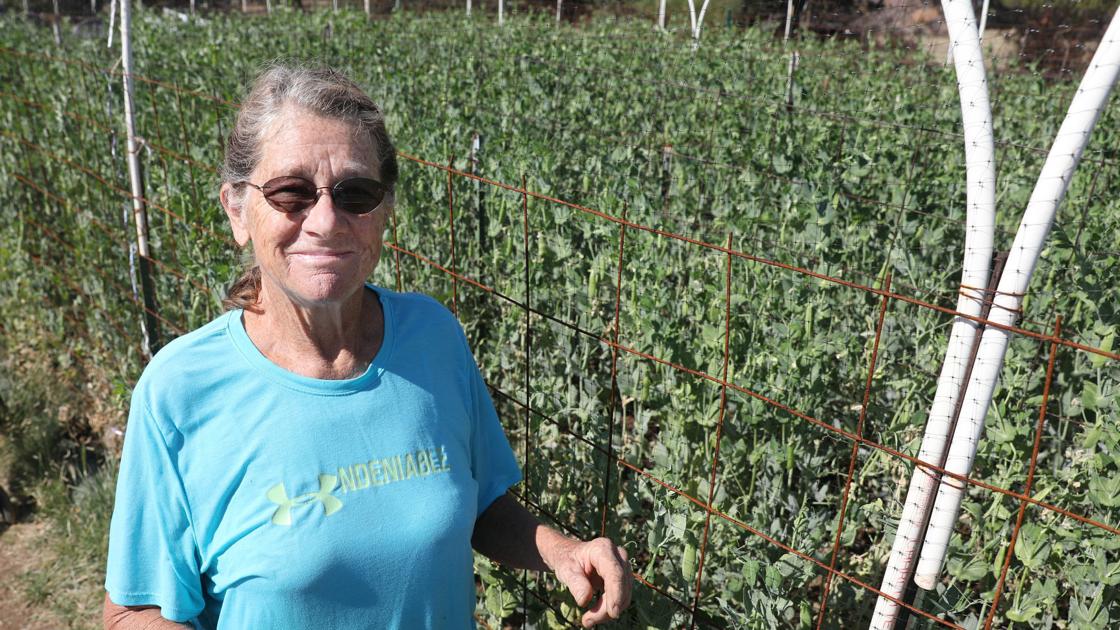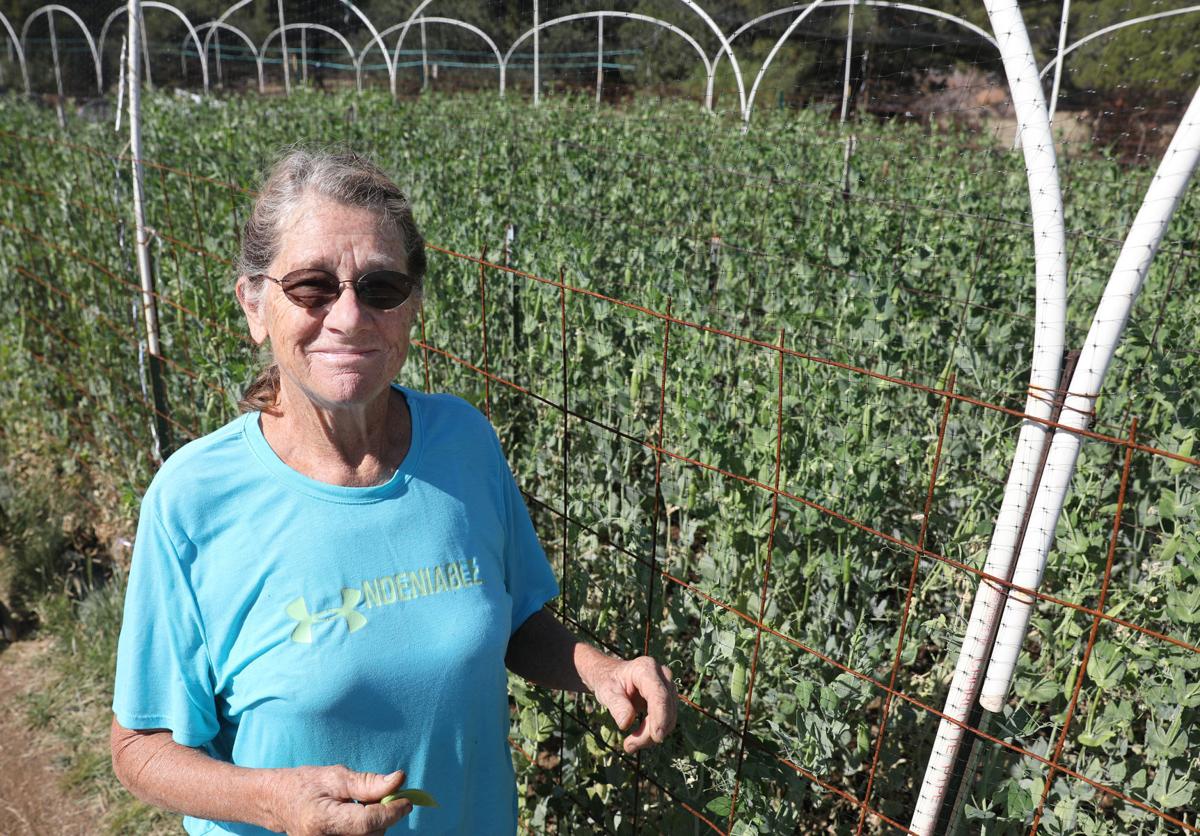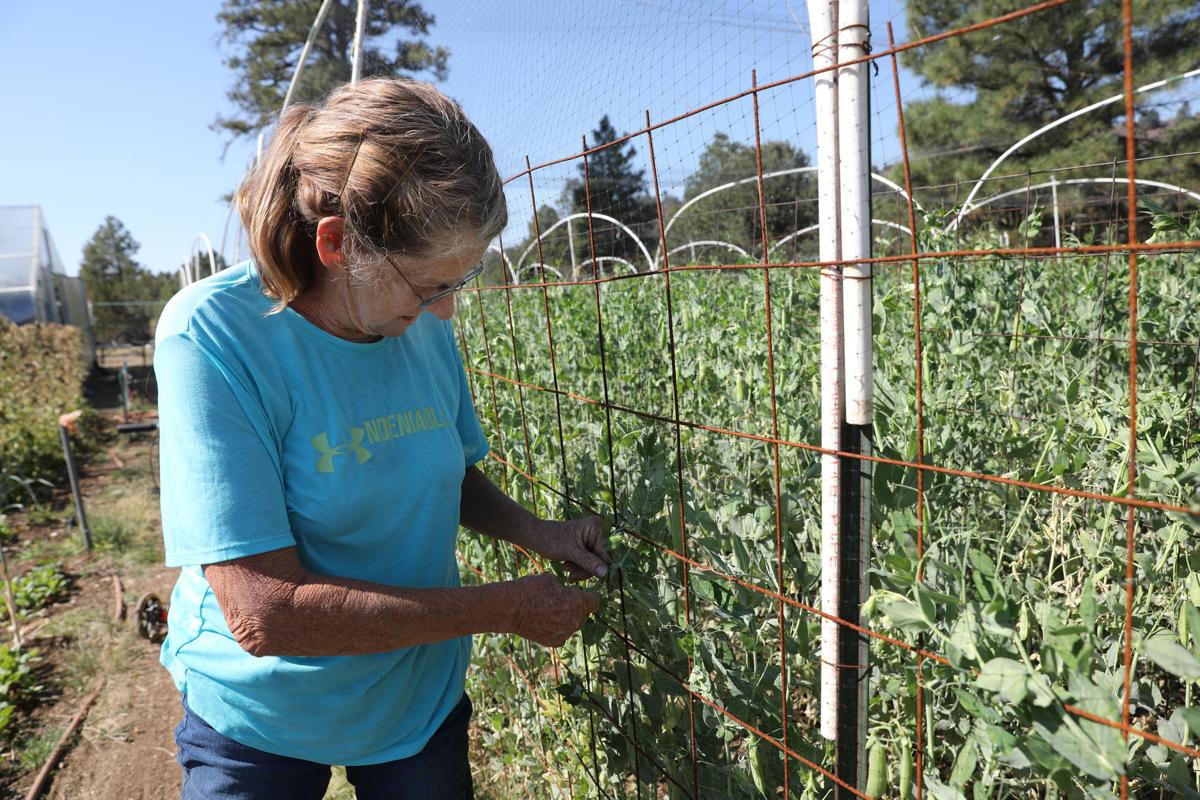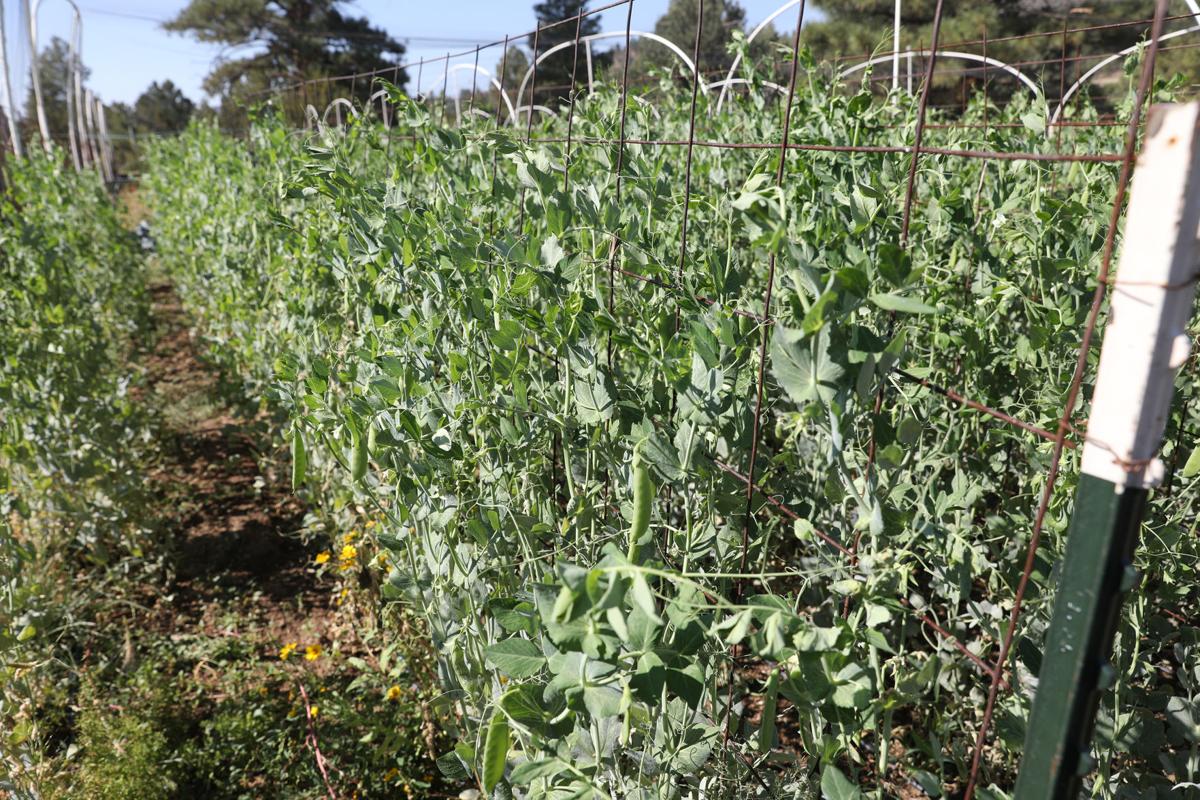
Peggy Pollak always knew she wanted to be a farmer, and in retirement she's been able to put all of her time into Tree A'Lolly Farm.
Her Doney Park farm sits on just a third of an acre but includes two greenhouses. Pollak has been able to grow all kinds of vegetables and spices, including lettuce, spinach, chilis, rosemary and sweet green beans that burst with flavor.
She expects that her farm will not get the same amount of rain as Flagstaff does, but she usually expects to get something. But this year, it's been dry and hot from June even into September.
Rainwater is generally better for plant growth than ground water because it brings nitrogen into the soil that plants love. Every day without rain means another day spending hours getting water to the roots of her crops.
The process is time-intensive and expensive.
“The other thing about it not raining — and with it being so hot — is that my water bill this year is twice what it’s ever been in other years,” Pollak said.
This monsoon season, Flagstaff only received 1.78 inches compared to the normal 8.31 inches measured at the Flagstaff Pulliam Airport. This year was the driest monsoon in 122 years of recorded data, according to Dan LeBlanc, meteorologist with the National Weather Service.
This year's dry conditions even beat out last year's monsoon season, which was then hailed as the driest in recorded history. In addition to dry conditions, the region has also seen record heat throughout the state.
LeBlanc said the Weather Service has seen a high pressure system set up above Arizona, instead of the Four Corners region, meaning the state didn't get its expected eastern and southerly winds that help bring the summer thunderstorms.
The state's dry heat is now even stretching through September into October, which is normally when fall's cooler temperatures begin to temper monsoon thunderstorms.
"Because the combination of heat and dryness, fire fuels are also really dry," LeBlanc said. "Even though it is fall, homeowners and people should be thinking about preventing wildfires around their house."
Adapting to drought
Pollak sat as she gazed at the land her ranch home is built on, recalling years when rain seemed to come every afternoon to quench her thirsty plants.
The dry heat has left her on the lookout for pests that have been munching on the leaves and fruit of her crop. Tiny pests such as spider mites love the dry heat and aren't a stranger to farms. This year they've seemed to come out in force.
The mites don't taint the food, but they do make the food unattractive to eat, another way this dry heat has cut into her bottom line.
"Mites nibble holes on plant surfaces, and the plant loses water out of the hole, so it water-stresses the plant. It can eventually kill it," Pollak said. "It also marks leaves and fruits when it nibbles that makes it unattractive."
Heather White, another local farmer who co-owns a micro farm in the Timberline area, decided to start Refugia Farms two years ago. Refugia Farms has only been in operation during these past two dry monsoon seasons. They grow foods such as spinach, squash and beans for locals.
As White sees the continued hot and dry conditions, she wonders about what the region will look like due to human-caused climate change.
“It feels more dreadful in that it is evoking a great sense of dread for what this region, because of climate change, could look like in five, 10 or 50 years," White said.
On Thursday the drought monitor released its most recent report showing Flagstaff and much of northern Arizona is in extreme drought after the end of monsoon season. Central Arizona is a step up from northern Arizona and has hit the highest level of drought possible. Across the country, more than 39 million people are experiencing drought, according to the U.S. Drought Monitor.
The end of the monsoon season also marks the end of Flagstaff's water year, which measured 17.31 inches at the airport compared to the normal 21.86 inches between Oct. 1, 2019, and Sept. 30, 2020.
Looking forward into October, the National Oceanic and Atmospheric Administration's Climate Prediction Center suggests this warm and dry trend throughout the southwest will continue through mid-autumn. For at least the next week, the National Weather Service predicts mostly sunny days in the high 70s and low 80s, with winds blowing throughout the week.
However, scientists know that droughts are common for Arizona and New Mexico. Using tree rings, scientists have shown that forests have survived decades of drought conditions that can lead to challenges for food growth.
White understands that the weather in the region can be unpredictable, having grown up in the area, but the severity is what caught them by surprise.
"We weren't expecting a walk in the park, but the heat and lack of what should be predictable moisture is one we were not anticipating," White said. "We're having to make contingency plans. In a way, we're thankful the operation is so young and just getting started. We have a little bit of malleability to change the way we're growing."
Both Tree A'Lolly and Refugia Farms use Doney Park water systems for their irrigation. Pollak has a small rainwater system, while White said the farm was trying to set up a 3,000-gallon water tank to catch rain and snow.
Both are optimistic that people will find a way to adapt to whatever the future holds for northern Arizona agriculture.
Pollak said her plan is to pick what to grow based on the weather the region is seeing. For example, colder weather is generally better for growing spinach, cilantro and lettuce, whereas corn and watermelon prefer warmer weather.
"I think anybody who's succeeded in gardening in Flagstaff so far will know how to adapt and do what they need to do to keep gardening," Pollak said. "As long as we have a water supply."
White agreed, saying she felt there is still a future for agriculture in northern Arizona, despite the hardship.
"Since time in memoriam on the reservation, people have faced far worse. It's a question of how flexible are people going to be willing to be," White said. "It's exciting in some ways, and allows for a lot of creativity."
Subscribe to our Daily Headlines newsletter.
October 02, 2020 at 07:00PM
https://azdailysun.com/news/local/local-farms-adapt-to-historic-hot-and-dry-weather-blowing-into-october/article_11a52228-8ce1-5b36-9ae3-cc784952bdb3.html
Local farms adapt to historic hot and dry weather blowing into October - Arizona Daily Sun
https://news.google.com/search?q=dry&hl=en-US&gl=US&ceid=US:en




No comments:
Post a Comment